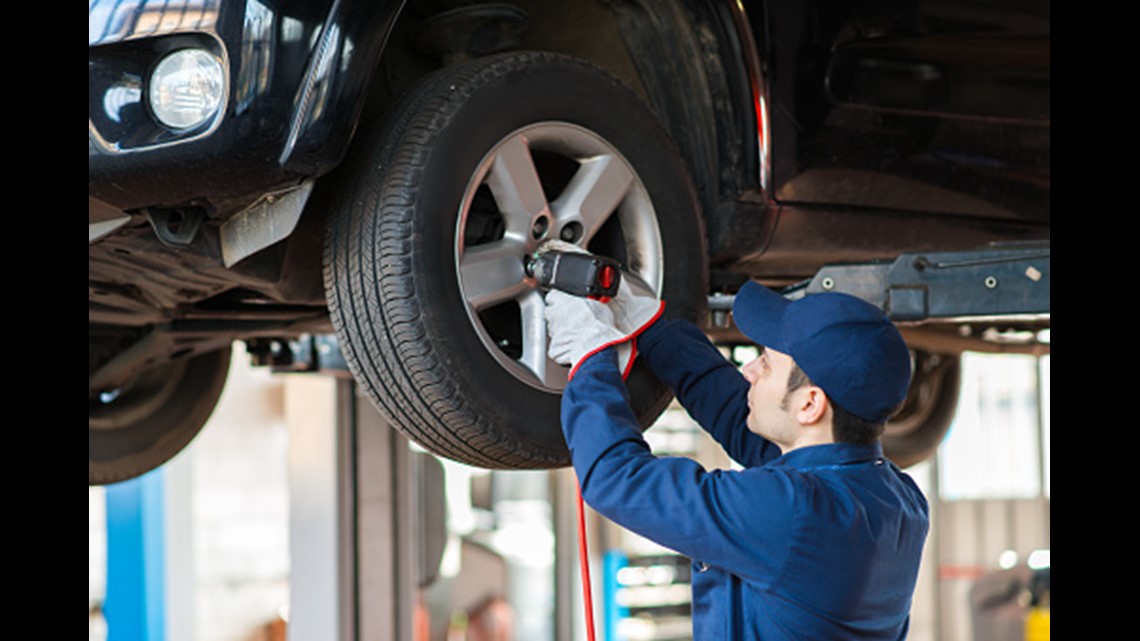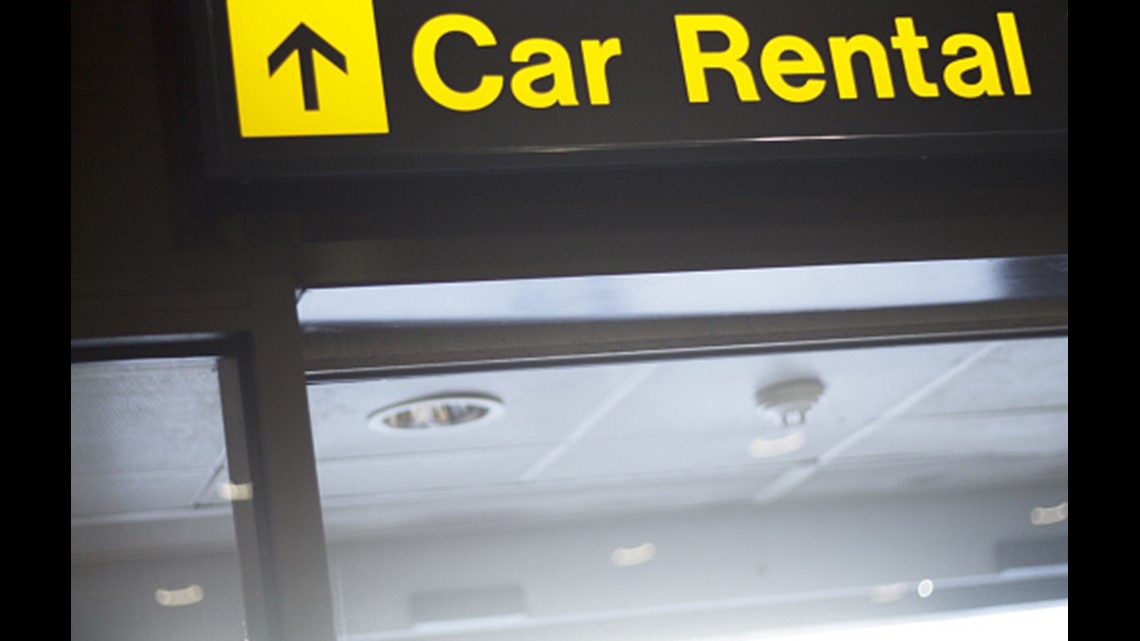Newlyweds Aaron and Megan McCoy were on their way to celebrate their first Thanksgiving as a married couple when they ended up on the side of a Georgia road with car trouble.
“The car was already ailing during our honeymoon a few months before, but now things came to a genuine head,” says Megan, a graphic designer in Athens, Ga. “The oil can had cracked, and it was seeping gas back into the cabin. The expense was going to be more than $2,000.”
Even without breakdowns, car expenses can be costly. Transportation expenditures increased 4.7% to $9,503 in 2015 — the most recent figures — representing up to 13.6% of an American’s annual income, according to the U.S. Bureau of Labor Statistics.
An average of $2,090 a year is spent on gas and motor oil, according to the bureau’s data. This varies by location, with residents in the Southwest spending the most on their vehicles, due to the region’s vast distances.
Taking a summer road trip may allow you to see new parts of the country or avoid concerns about airline overbooking or delays, but vehicle emergencies and towing costs could deflate your vacation excitement.
With the start of the summer vacation season, AAA expects to assist 7 million American drivers in 2017. The recent survey by North America’s largest motoring and leisure travel organization also found that four out of 10 motorists are unprepared for emergency breakdowns, with dead batteries and flat tires among the top culprits.
These steps can help you vacation-proof your car and save money by avoiding costly emergencies.
1. Invest in pre- and post-trip maintenance
Keeping your vehicle in good shape makes sense if you want your trip to be hassle-free. Experts recommend a basic vehicle checkup before making the drive.
“Before you leave, check your fluids — oil, transmission, brake, radiator, power-steering — and tire tread and pressure,” says Matt Smith, an editor with CarGurus.com, an online automotive research and shopping website based in Cambridge, Mass.


A survey by AAA found that two-thirds of American drivers have “never proactively had their car battery tested.” In addition, one in five do not know how to change a tire. AAA recommends conducting oil changes, fluid level checks, battery tests, and tire inspections before a trip.
To prepare for a summer road trip, also check the air-conditioning coolant or air filter in order to avoid foul odors from the vents, or water stains inside your vehicle due to a clogged drain, says Smith.
According to Auto Service Costs, an online automotive maintenance resource, a standard tune-up can cost $50-$200. If there are problems, the expense can increase, perhaps to more than $900.
“You will always have a flat tire in the rain at night, that’s just the way it works,” says Lauren Fix, an automotive expert known as the “Car Coach.” She is the spokeswoman for the Car Care Council, which offers a free guide to maintenance and repairs.
Long distances can lower the air pressure in tires, and an oil change every 5,000 miles can help avoid engine damage, Fix says.
Following the same pre-trip checklist after you return also could help save money. A wash and detail also is in order if the car has been driven on a dirt road.
“If you’ve been to the beach, vacuum the car as soon as possible, and get the undercarriage rinsed with fresh water,” Fix says. “Also, the sun can be really brutal on the paint. So wax your car after a trip.”
Although the McCoys try to keep up with car maintenance, Megan admits she didn’t do much preparation for their 2013 trip.
“All of our friends had already left for the holiday, and Uber wasn’t a thing yet,” she says. “The only thing we could do was try to start the car, so we could get to a shop.”
2. Keep the weather in mind
In 2014, Katie Eaker and a few of her college friends were driving the 860 miles from Augusta, Ga., to Chicago, when they found themselves stranded in Lexington, Ky., because her car wouldn’t start.
“Growing up in Georgia, with its warm, humid weather, I never really knew how to take care of a car in cold weather,” says Eaker, a marketing director for a modular building construction company in Gainesville, Ga. “In Illinois, you have snow, ice, and the salt from the road damages the bottom of the car.”
Cold air causes the fluids in your car to thicken. It also lowers your tire pressure because most tires lose one pound per square inch (psi) for every 10 degrees of temperature drop. It’s a good idea to invest in winter or snow tires, or check your tire pressure to make sure they are properly inflated in colder weather.
“Salt corrodes metal above freezing temps,” says Smith. “But you don’t have to worry unless the temperature rises above 32 degrees, because that’s when it will start to eat away the car.”
Warmer air comes with its own set of problems as well. The air-conditioning could fail if it isn’t properly checked, or the engine could overheat if the cooling system isn’t flushed every year. Changing to summer tires also could help you have better fuel efficiency.
3. Know when to rent
Renting may make more sense than driving your vehicle, depending on the purpose of the trip, your route, or the condition of your car.
Driving through high-congestion areas, including large cities, may be a reason to rent, Smith says.
“Just as the risk of fender benders increases, so does the appeal of renting or driving someone else’s car,” he says.
The miles on your car shouldn’t be a deterrent, says Fix. “If you regularly maintain the car, don’t be afraid if it’s got 180,000 miles on it,” she says.


The average cost of renting a car can range between $38 to $43 per day. According to the U.S. Bureau of Labor Statistics’ Consumer Expenditure Survey, 21% of households take road trips, out of which 2% rent a vehicle and spend an average of $1,223.
To save money on rentals, Fix recommends looking for online deals and not renting at an airport, where costs can be higher. For example, renting a full-size Nissan Altima via Enterprise and picking it up at a location in downtown Atlanta will cost $65 a day. Picking up the car at Hartsfield-Jackson Atlanta International Airport will cost $123 a day. The difference in cost is due to extra fees, such as a customer facility charge.
The same car, online, can be rented for $43 a day for pickup at a downtown location, or $105 at the airport.
“Don’t pay retail, there are tons of deals online,” says Fix.
4. Understand your insurance policy
In Kentucky, Eaker and her friends had the car towed to a shop, where the estimate for the repairs was $3,000. Eaker’s dad decided the repairs were not worth it, and donated the car to breast cancer research. She then rented a vehicle for the drive to Illinois.
Eaker was under 25 at that time, so she had to pay an extra fee for the rental. The “young renter fee” is approximately $20 per day. Fortunately for her family, car rental insurance was included when they used her father’s credit card.
While figures vary by state, the average annual cost of car insurance in 2016 was $1,180. Knowing what your auto insurance covers is a good starting place if you’re considering renting a vehicle. A typical insurance policy has six types of coverage: bodily injury liability, property damage liability, medical payments coverage, uninsured or underinsured motorist, collision, and comprehensive coverage, Smith says.
Before heading on a road trip, it’s crucial to know if you have rental car coverage and roadside assistance on your personal policy.
A typical comprehensive and collision coverage includes the value of a rental car in the event of a total loss. Credit cards offer secondary rental insurance, which means they will pay only for certain damages not covered by your insurance policy, provided you use the card to pay for the car. For example, American Express, MasterCard, and Visa pay loss-of-use charges if the rental company supports them with proof of the loss.
“I always get the walkaway insurance from the rental company added to my basic insurance,” says Fix. “For example, if you’re in a parking lot and somebody backs into you, and it’s not your fault, and there’s a $1,000 worth of damage, instead of you paying that amount, it’s covered. You just walk away.”
The walkaway insurance is also known as the collision damage waiver (CDW) or loss-of-use damage waiver (LDW). The cost depends on the company, but it’s generally a percentage of the overall rental charge. The waiver protects you from being billed a loss-of-use fee for each day that the vehicle wasn’t able to be rented.
The timing of the McCoys’ ill-fated Thanksgiving trip kept them from renting, since it was a holiday weekend and nearby rental agencies were closed. Instead, they managed to start the car and drive it slowly to a Ford dealership near Athens, where they purchased a used Ford Fiesta for $19,000.
“We’ve learned from our experiences,” says Megan. “We now take it in for regular tune-ups — oil checks, tire rotations, and alignment checks.”
MagnifyMoney is a price comparison and financial education website, founded by former bankers who use their knowledge of how the system works to help you save money.

